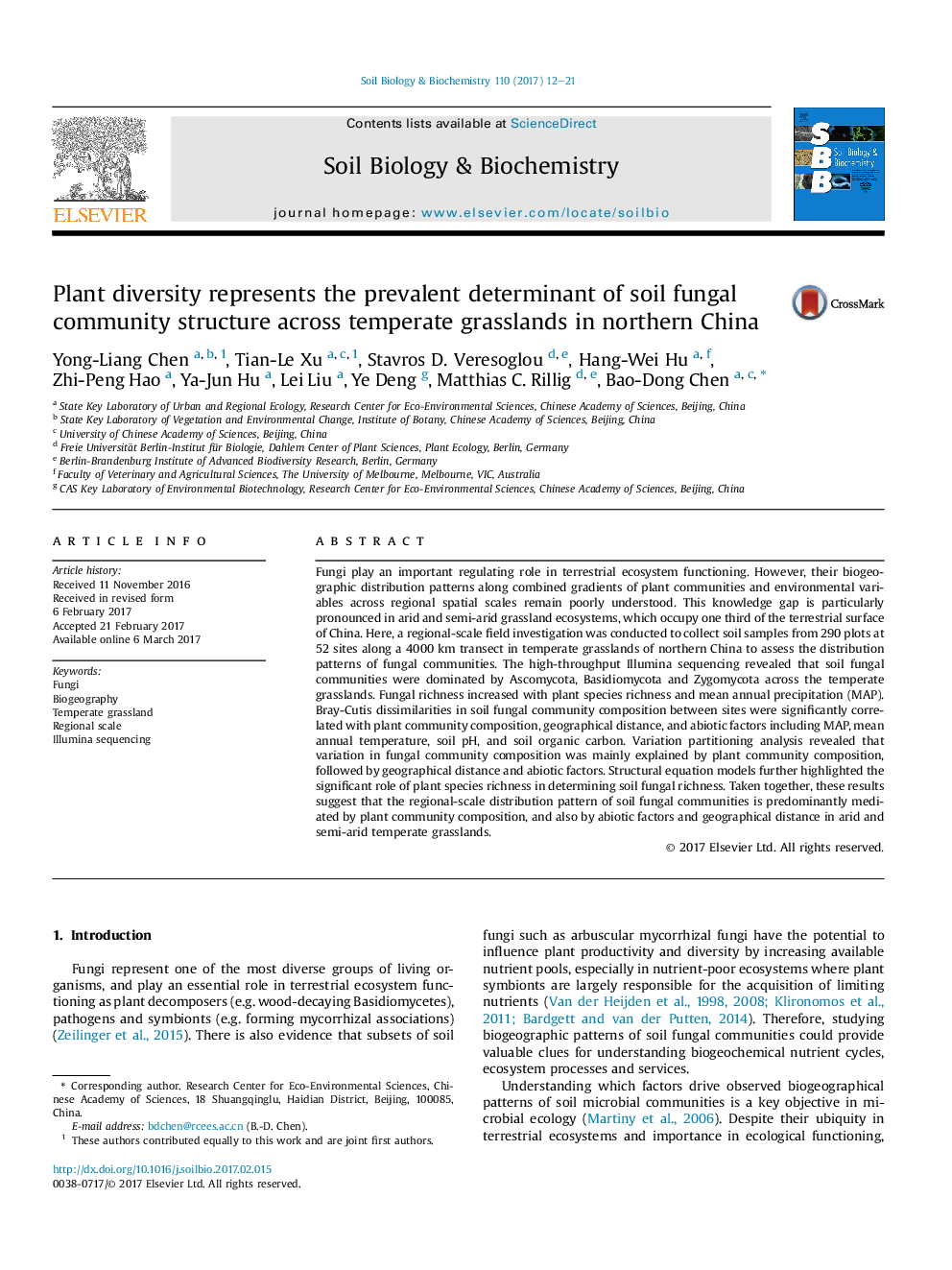| کد مقاله | کد نشریه | سال انتشار | مقاله انگلیسی | نسخه تمام متن |
|---|---|---|---|---|
| 5516395 | 1542574 | 2017 | 10 صفحه PDF | دانلود رایگان |
- Ascomycota, Basidiomycota and zygomyceteous fungi dominate the temperate grasslands.
- Soil fungal richness increased with plant species richness and mean annual precipitation.
- Beta diversity of soil fungal community were mainly influenced by plant community composition.
- Geographic distribution of soil fungal communities is predominantly mediated by plant communities.
Fungi play an important regulating role in terrestrial ecosystem functioning. However, their biogeographic distribution patterns along combined gradients of plant communities and environmental variables across regional spatial scales remain poorly understood. This knowledge gap is particularly pronounced in arid and semi-arid grassland ecosystems, which occupy one third of the terrestrial surface of China. Here, a regional-scale field investigation was conducted to collect soil samples from 290 plots at 52 sites along a 4000Â km transect in temperate grasslands of northern China to assess the distribution patterns of fungal communities. The high-throughput Illumina sequencing revealed that soil fungal communities were dominated by Ascomycota, Basidiomycota and Zygomycota across the temperate grasslands. Fungal richness increased with plant species richness and mean annual precipitation (MAP). Bray-Cutis dissimilarities in soil fungal community composition between sites were significantly correlated with plant community composition, geographical distance, and abiotic factors including MAP, mean annual temperature, soil pH, and soil organic carbon. Variation partitioning analysis revealed that variation in fungal community composition was mainly explained by plant community composition, followed by geographical distance and abiotic factors. Structural equation models further highlighted the significant role of plant species richness in determining soil fungal richness. Taken together, these results suggest that the regional-scale distribution pattern of soil fungal communities is predominantly mediated by plant community composition, and also by abiotic factors and geographical distance in arid and semi-arid temperate grasslands.
Journal: Soil Biology and Biochemistry - Volume 110, July 2017, Pages 12-21
